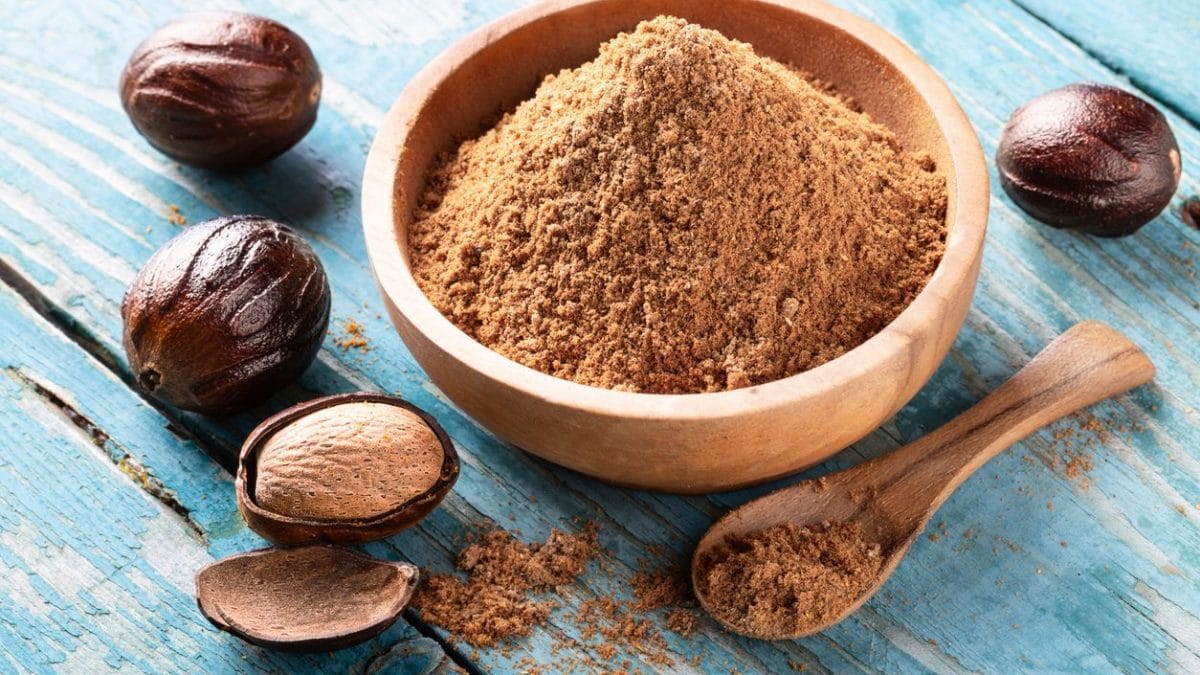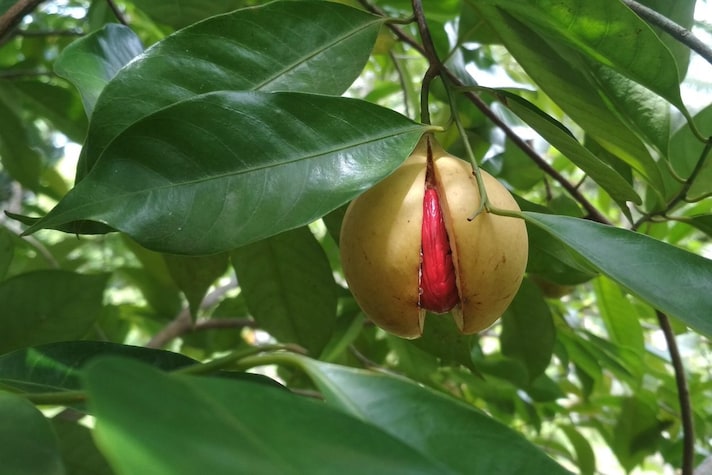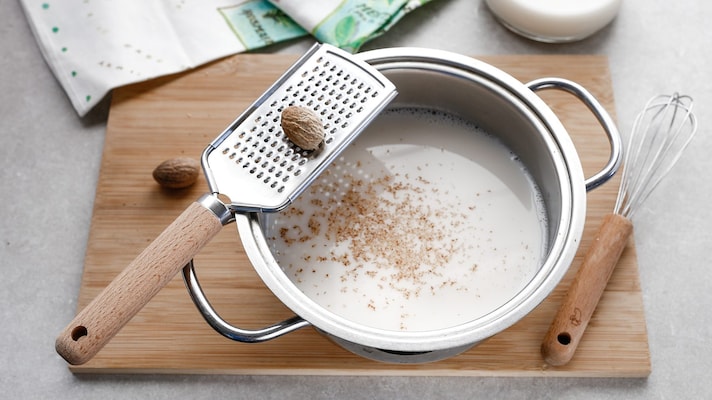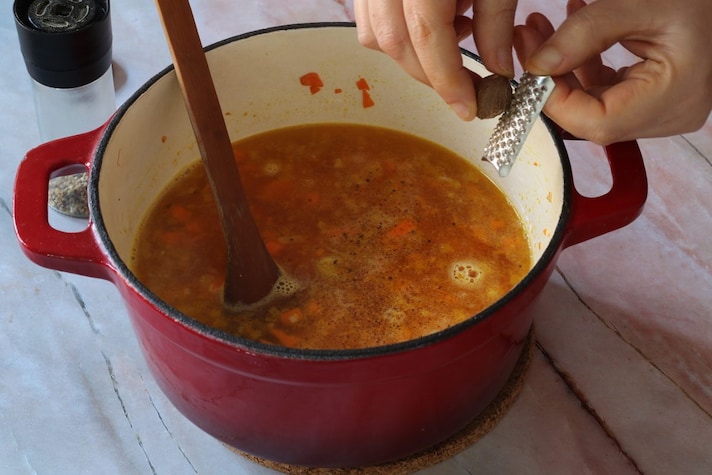
Nutmeg is the hulled seed extracted from the inner part of an Indonesian plant called Myristica fragrans. It is a spice with ancient uses, also used in traditional medicine for centuries. An essential ingredient in béchamel sauce, nutmeg has a refined, sweet, and exotic flavor with a very light spicy note. It is used to make fresh pasta fillings, sauces, main courses, and side dishes, but especially in delicious desserts, to which it adds a special touch. What are its benefits? Are there any contraindications to daily use? Here's everything you need to know about nutmeg: benefits, contraindications, and how to best use it in the kitchen.
Where Does Nutmeg Com From and What Are Its Benefits?
Myristica fragrans Houtt is a tree of the Myristicaceae family native to the Moluccas Islands in Indonesia: today it is cultivated in almost all intertropical regions. Not one, but two spices are obtained from this plant: the hulled seed, known as nutmeg, and mace, the outer layer covering the seed. Its name comes from "Muscat nut," a reference to the capital of Oman, where it was first marketed. Long popular in the markets of Arab countries, it was only considered a sought-after product in Europe in the 16th century: it quickly became so prized that it sparked conflict and hostility among Western countries, who sought a monopoly on it.
It is a spice rich in nutritional properties: rich in water and vitamins – such as vitamins A, C and B vitamins (especially niacin and thiamine) – it provides proteins and important minerals such as potassium, phosphorus, calcium and magnesium. 100 g of nutmeg provides approximately 525 calories.
Nutmeg has carminative and purifying properties, which is why it has been used for centuries to prepare decoctions and infusions useful for countering nausea, stomach pain, vomiting, and digestive disorders in general: it helps expel gas that forms in the stomach and intestines and relieves colic pain. It is also effective in cleansing the kidneys and liver, and thanks to its antifungal and antibacterial properties, it becomes an important urinary tract disinfectant. Nutmeg also has effects on mood: it has a relaxing effect and is useful for stress and anxiety, promotes evening relaxation, and prevents insomnia.

Nutmeg's Contraindications
Nutmeg has many properties and should be used with caution. Myristicin, the main component of the essential oil extracted from Myristica fragrans, has a narcotic-like effect when consumed in high doses, causing hallucinations and convulsions. However, this is only true if consumed in excess of 5 grams. Don't worry: the maximum daily dose is 2 grams, a dose that's extremely difficult to achieve if used as a spice, as is the case in all culinary traditions. Symptoms of nutmeg poisoning, in any case, include excessive sweating, vomiting, diarrhea, and convulsions.
It is absolutely not recommended during pregnancy, as it could cause problems for fetal development, but also for people with neurological problems or epilepsy. If you are taking medication for depression, it is best to consult your doctor before taking nutmeg.

How to Use Nutmeg in Cooking
Nutmeg can be found commercially in powdered form or as whole seeds, both brown and white: we suggest you buy the nuts and grate them only when you are ready to use them, to get the most out of its fragrance.
Nutmeg is used in cooking as an ingredient in both sweet and savory recipes, most notably in béchamel sauce. Thanks to its exotic and slightly spicy aroma, it is often added to fresh pasta fillings such as cappelletti, ravioli, and tortellini, as well as to sauces for cannelloni and lasagna.

Nutmeg is used to flavor roasted or pan- fried vegetables, mashed potatoes, but also creamy soups and legume soups: it is also excellent paired with white meat or fish. It is used more abundantly in pastry making, to enrich biscuits, cake batters, creams and jams. In the rest of the world, nutmeg is equally widespread, particularly in Middle Eastern, Indonesian and Indian cuisine, especially in the Kerala region, where it is also used in a smoked version and is often part of the garam masala mix.
And what about mace? With a more delicate flavor and bright red color, the nutmeg husk is also used in cooking, particularly in traditional stews and casseroles, but also in fish-based dishes. It is also often used to prepare liqueurs and alcoholic infusions, such as mulled wine.
;Resize,width=767;)
